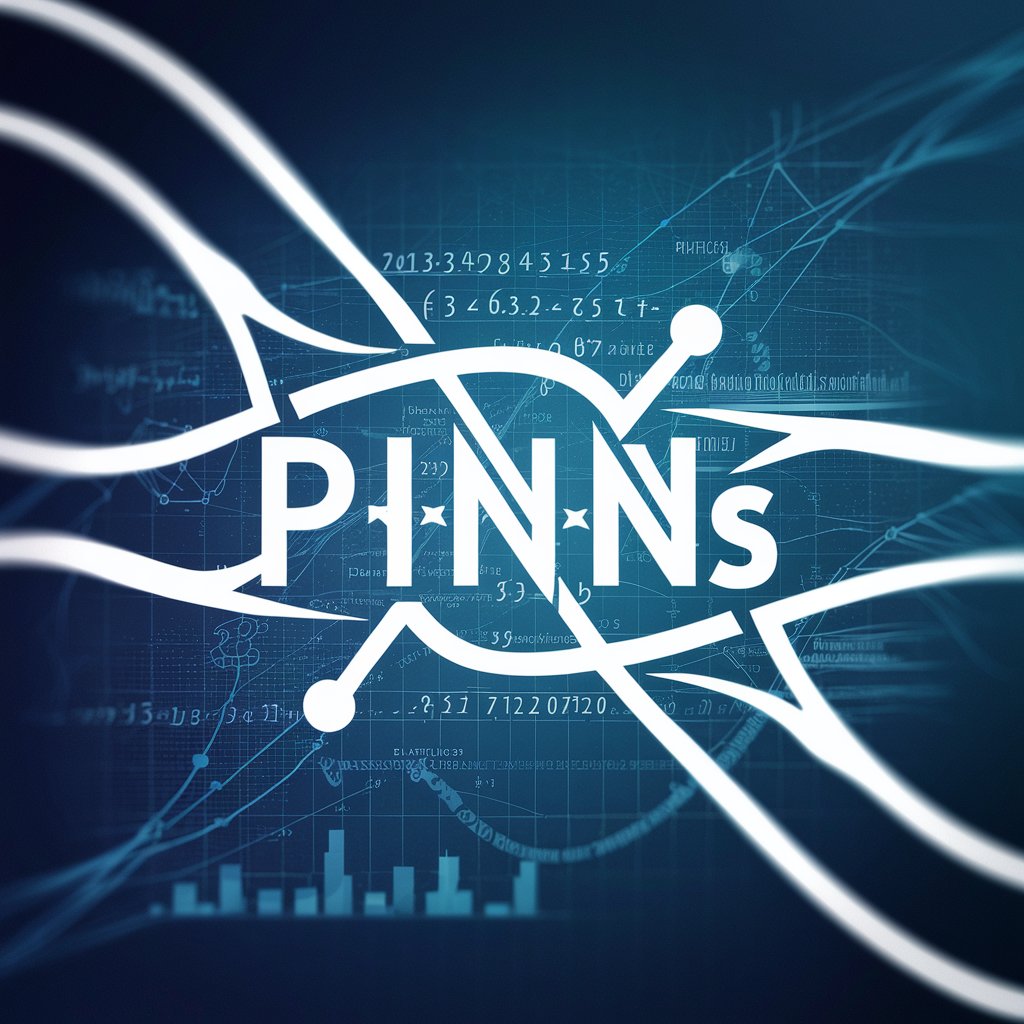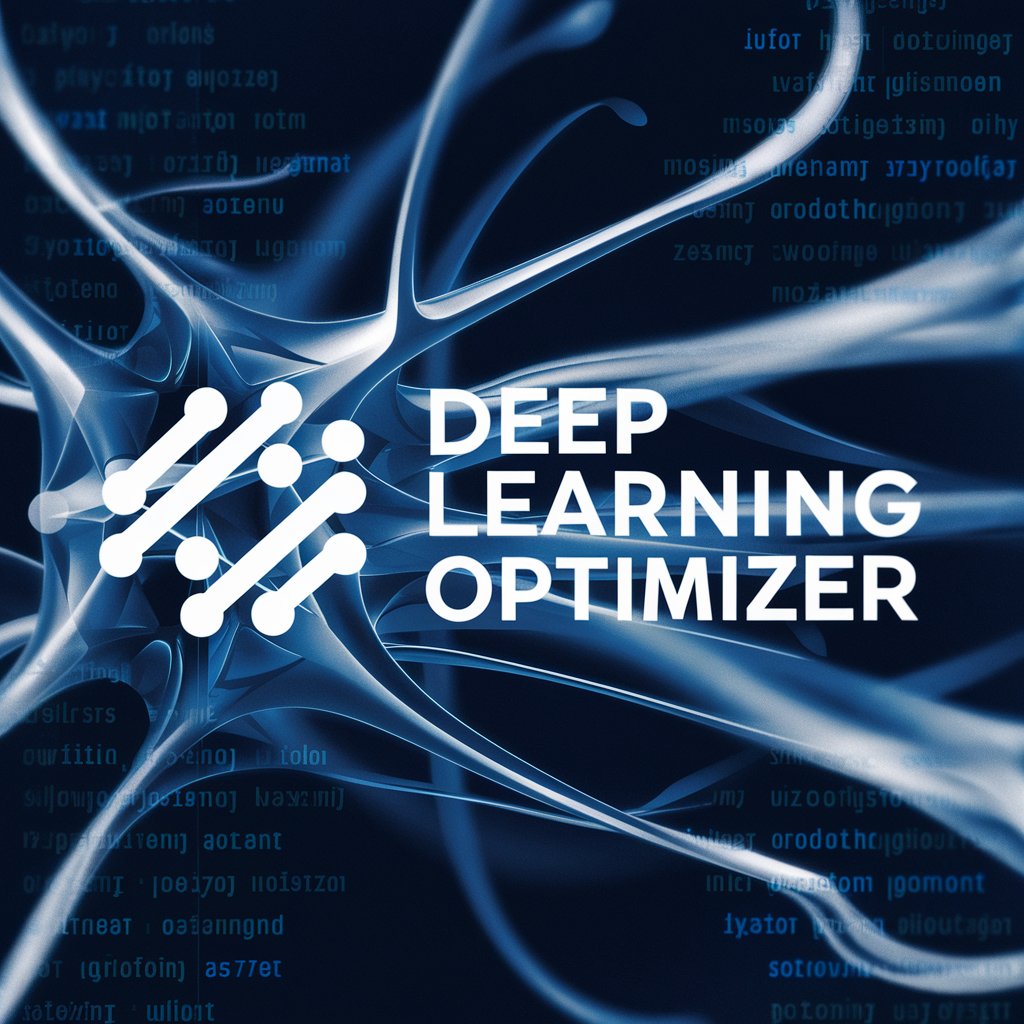
PINNs and Optimization - Optimization & Learning Guide

Hello! How can I assist with your optimization and neural network needs today?
Optimize models with physics-informed learning.
Explain how to modify gradient descent algorithms using PyTorch.
How can I create geometrical inputs for neural networks with numpy arrays?
Describe custom adjustments to learning techniques within PyTorch for shape optimization.
What are the best practices for optimizing neural network training for shape optimization problems?
Get Embed Code
Introduction to PINNs and Optimization
Physics-Informed Neural Networks (PINNs) are a class of deep learning models designed to solve differential equations that are governed by underlying physical laws, by incorporating these laws as part of their learning criteria. This integration allows PINNs to make predictions that adhere to the physical constraints of the problem domain, leading to more accurate and physically plausible solutions. For instance, PINNs can model fluid dynamics, material deformation, or heat distribution by ensuring predictions comply with Navier-Stokes equations, elasticity theory, or the heat equation, respectively. Powered by ChatGPT-4o。

Main Functions of PINNs and Optimization
Solving Differential Equations
Example
Fluid dynamics simulation
Scenario
PINNs are applied to simulate fluid flow around objects by learning the Navier-Stokes equations, reducing the need for extensive computational resources typically required by traditional numerical methods.
Inverse Problem Solving
Example
Material property identification
Scenario
In materials science, PINNs can identify unknown material properties by learning from experimental data, ensuring predictions are consistent with physical laws.
Data-driven Discovery
Example
Discovering physical laws
Scenario
PINNs can be used to discover new physical laws or relationships directly from data, by constraining the neural network with known physics while it identifies unknown governing equations.
Ideal Users of PINNs and Optimization
Researchers in Computational Physics
Researchers focusing on solving complex physical systems can utilize PINNs to gain insights and predictions without relying solely on traditional, resource-intensive computational methods.
Engineers in Design and Manufacturing
Engineers can employ PINNs to optimize design processes, material selection, and manufacturing techniques by integrating physical laws into the optimization process, leading to designs that are both innovative and physically viable.
Data Scientists in Environmental Sciences
Data scientists working in environmental sciences can use PINNs to model climate change impacts, pollution dispersion, or resource depletion, benefiting from PINNs' ability to incorporate complex environmental laws into their models.

Guide to Using PINNs and Optimization
Start your journey
Begin your exploration of PINNs and Optimization by visiting an accessible platform that offers a free trial, ensuring a hassle-free experience without the need for a login or subscription.
Understand the basics
Familiarize yourself with the foundational concepts of Physics-Informed Neural Networks (PINNs) and optimization algorithms to effectively leverage their capabilities in solving complex problems.
Prepare your environment
Set up your computational environment with necessary libraries such as TensorFlow or PyTorch, and ensure you have a solid understanding of differential equations and numerical methods.
Design your model
Construct your PINN model by integrating physical laws into the loss function, ensuring that your network learns both from data and the underlying physics of the problem.
Iterate and optimize
Employ optimization techniques to train your model, iteratively adjusting parameters to minimize loss. Utilize gradient descent or advanced optimizers for improved performance.
Try other advanced and practical GPTs
Go Guru
Empowering your Go development with AI-driven insights.

Video Transcription Summariser
Transforming messy transcripts into clear summaries.

Script Helper
Empowering Your Screenwriting Journey with AI

Profesor Pinzas
Empowering your writing journey with AI-powered literary insights.

Audience Builder Mentor
Empowering Marketing with AI Insight

Glyph Audience Refiner
AI-Powered Audience Understanding

React Buddy
Empower Your Code with AI

Geo Quester
Guess the world, one pixel at a time.

Code Quester
Master coding through magic and quest.

Code Quester
Craft games with AI-powered guidance

Story Quester
Craft Your Own Adventure with AI

Academic Quester
Elevating Academia with AI

FAQs on PINNs and Optimization
What are Physics-Informed Neural Networks?
PINNs are a type of neural network that incorporate physical laws into their architecture, using these principles to guide the learning process and provide predictions consistent with known physics.
How do PINNs differ from traditional neural networks?
Unlike traditional neural networks that learn solely from data, PINNs are informed by physical laws, which helps in providing solutions that adhere to physical constraints, potentially reducing the amount of data needed for training.
In what fields can PINNs be applied?
PINNs have applications across various domains, including fluid dynamics, materials science, and biomedical engineering, where they can model complex phenomena governed by physical laws.
What optimization techniques are used with PINNs?
Optimization in PINNs often involves gradient descent algorithms and its variants, customized to balance the learning from data with the adherence to physical laws.
How do you evaluate the performance of a PINN model?
Performance evaluation of PINNs involves checking the accuracy of predictions against known solutions or experimental data, as well as ensuring the model's predictions comply with the physical laws it was informed by.





